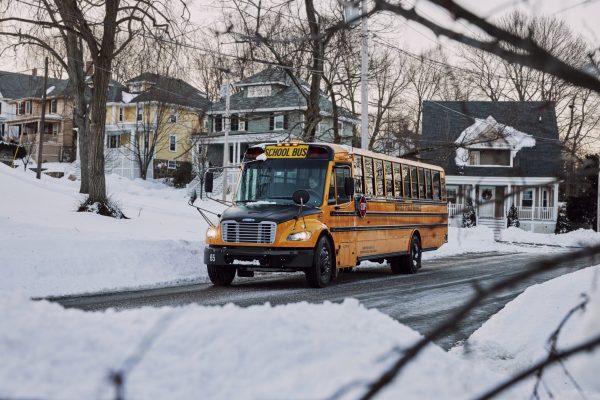
Contacts:
Noah Barnes, Electrification Coalition, nbarnes@electrificationcoalition.org
Bridget Dunn, SAFE, bdunn@secureenergy.org
WASHINGTON—The Electrification Coalition and SAFE have released the V2X Implementation Guide: Implementation Guide and Mutual Aid Agreement Template for Using Vehicle-to-Everything-Enabled Electric School Buses as Mobile Power Units to Enhance Resilience During Emergencies, which can be downloaded for free here.
Electric school buses (ESBs) equipped with vehicle-to-everything (V2X), or bidirectional charging capability, can serve as “mobile power units” to provide backup power to emergency shelters and other critical facilities. Because ESBs have an average battery capacity of 150 kilowatt-hours, a V2X-enabled ESB can provide backup power to a critical facility, such as a school serving as a shelter, for nearly two days and to critical loads for multiple hours, if not longer.
This guide consists of detailed steps for emergency managers and responders and other key stakeholders, such as school districts, school facility managers, and electric utilities, to take before, during, and after an emergency to deploy bidirectionally-enabled ESBs to provide emergency backup power.
The guide also contains a mutual aid agreement template with specific elements that are necessary to have in place and that merit agreement by relevant parties so that ESBs can be readily deployed as mobile power units during emergencies.
“As we transition away from our dependence on oil and toward electric vehicles of all types, electric school buses not only reduce the air pollution that our children breathe but can also provide valuable benefits during emergencies,” said Electrification Coalition Executive Director Ben Prochazka. “Hospitals, shelters, and other vital services can utilize V2X-enabled buses to keep people safe, particularly in underserved communities, which are often hit hardest by extreme weather events.”
The V2X Implementation Guide was written by the Electrification Coalition and SAFE and made possible through funding from the World Resources Institute’s Electric School Bus Initiative.
###
About the Electrification Coalition: The Electrification Coalition is a nonpartisan, nonprofit organization that promotes policies and actions to facilitate the widespread adoption of plug-in electric vehicles (EVs) on a mass scale to overcome the economic, public health and national security challenges that stem from America’s dependence on oil. electrificationcoalition.org
About SAFE: SAFE is a non-partisan, non-profit policy thought leadership organization dedicated to accelerating the real-world deployment of secure, resilient, and sustainable transportation and energy solutions of the United States and its partners and allies by shaping policies, perceptions, and practices that create opportunity for all. secureenergy.org
